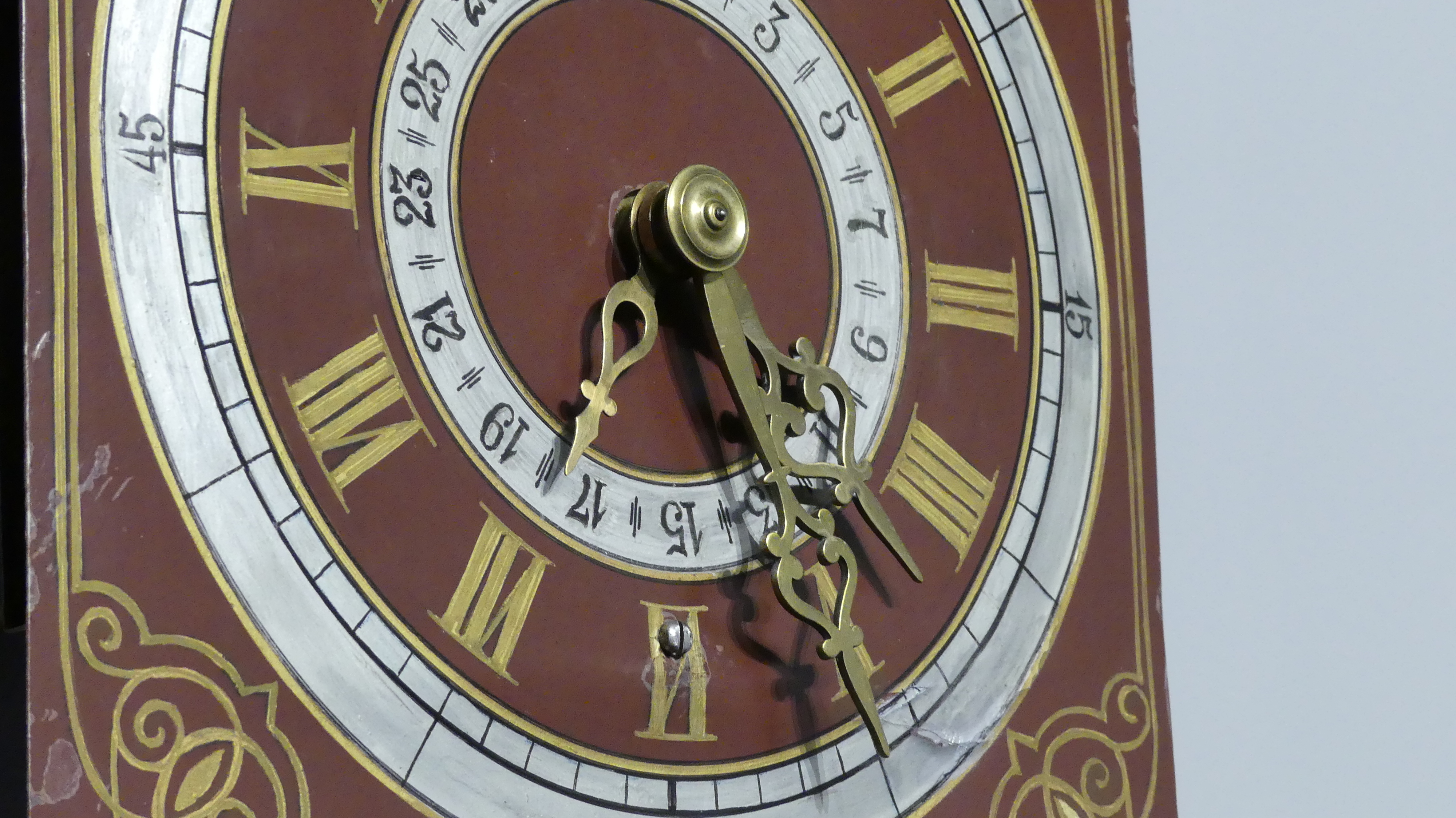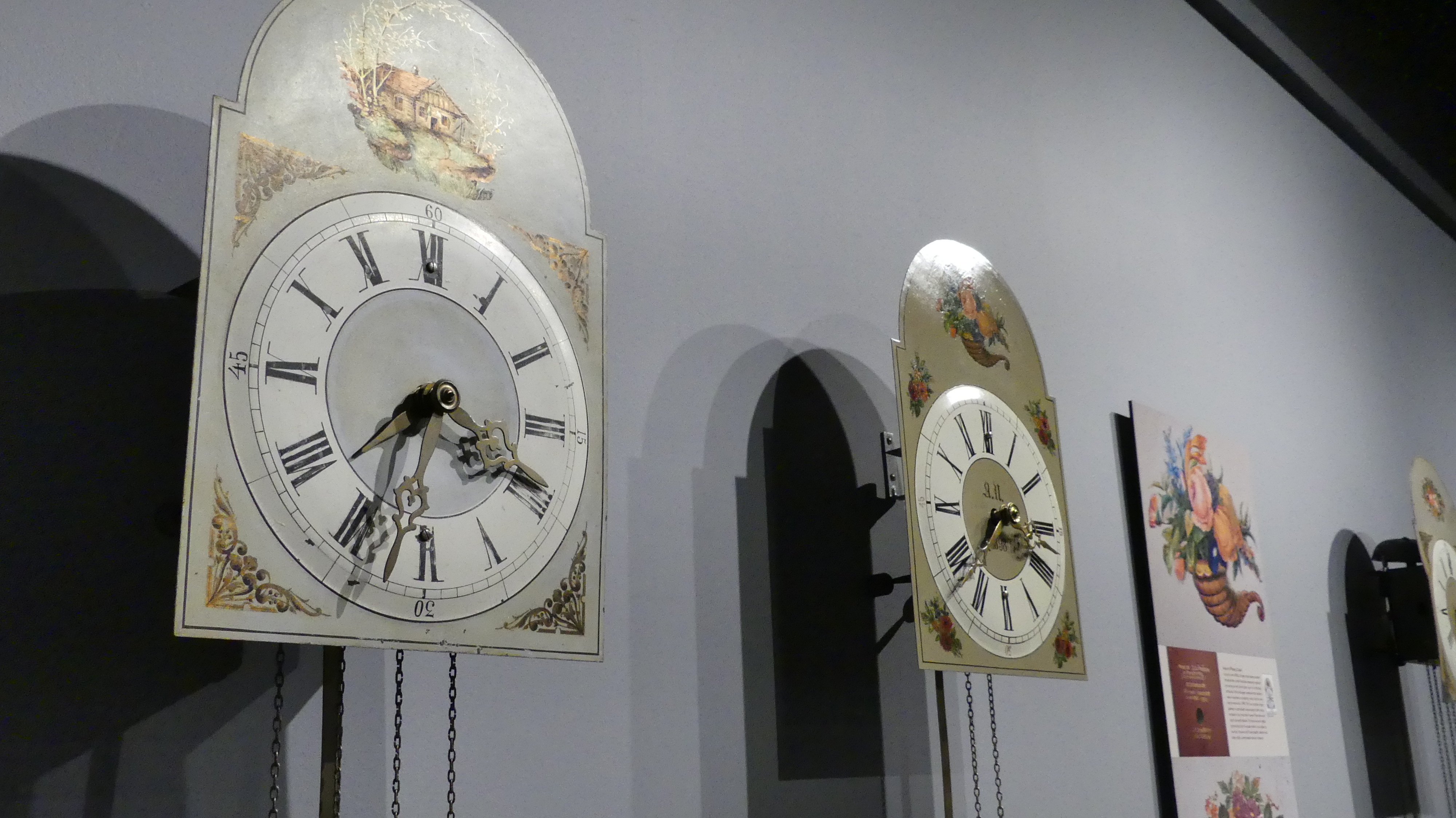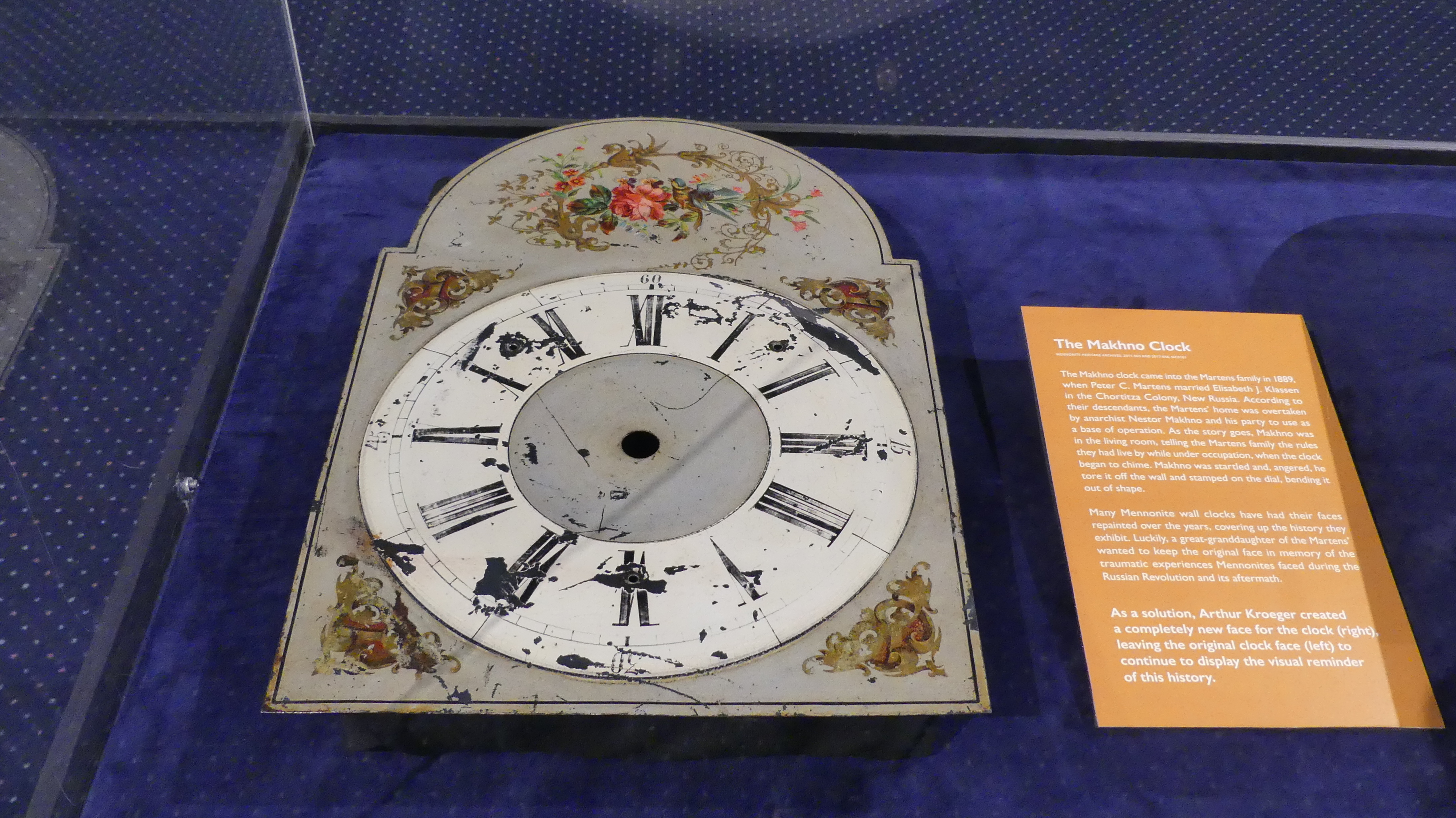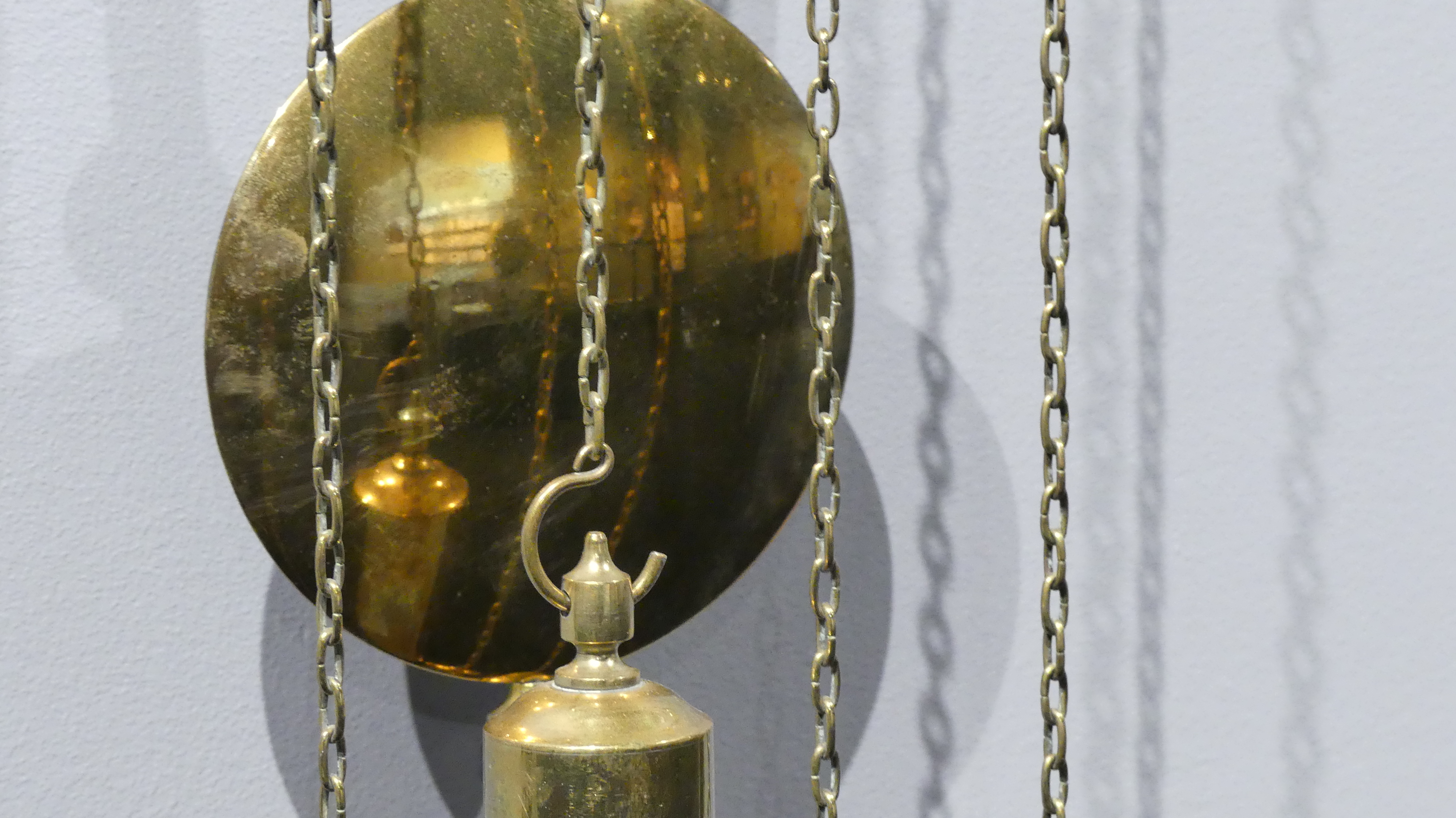October 6, 2018
As she fled war and persecution in Europe nine decades ago, Liza Kroeger’s great-grandmother took time to pack a large, heavy clock.
It was the Soviet Union in 1927 — a dangerous time and place to be a Russian Mennonite, which Anna Schulz was. The widowed mother of five, and her clock, had weathered a descent from well-to-do stability into world war and revolution, and the increasing oppression of Mennonites. They were forced to flee, and settled on the Canadian Prairies.
The clock was there for all of it. It was commissioned as a wedding gift when she got married to Peter Schulz in 1893. It hung as a not-quite-silent witness to the couple’s life through happiness and tragedy, including Peter’s death from a heart attack in 1914.
“I’m surprised. I’m surprised, myself, that of all the things that she would take with her … that that clock was in her sea chest,” Liza said, in a FaceTime call from Frankfurt, Germany, where she now lives.
“Her husband died relatively young, so was the clock also just a memento of [her] one and only?"

Generations later, the clock was passed from other family members into the possession of Liza's dad, Arthur Kroeger. It was the clock she grew up with, and the first of many Mennonite wall clocks her father would restore.
They came to him from other Mennonite families around the world with shared stories of displacement, each one of the clocks brought to new homes by migrant ancestors who prized them enough to pack them along.
The large clocks are sometimes called Kroeger clocks, after the prolific clockmaking Kroeger family from which Liza is descended. Three years after her father's death, Liza and a team of historians and history lovers are working to collect and preserve information on the clocks and the owners who treasured them.
“They are … icons of Mennonite heritage,” Liza said. “They tell stories through the generations.”
Mennonite wall clocks were scattered with the Mennonite diaspora around the world, to Canada, the U.S., Paraguay, Siberia and more. But they were almost all born in the same place, crafted by a small number of expert families from the late 18th century to around the 1920s in present-day Ukraine. The earliest examples were made near Gdansk, in present-day Poland, before many Mennonites relocated.
In well-to-do families, the clocks were often given as wedding presents, Liza said, and then passed down in the family. That may be part of the reason they were important enough to bring with as people left Ukraine, she speculated.
“To many [Mennonites], it’s continuation. They are reminded of their parents, their grandparents,” she said. “It’s a line into the past.”

The Mennonite-style clocks are easy to spot: large, pendulum-operated clocks, cut out of sheet metal in the shape of big rectangles with semi-circles on top (although the earliest ones were circular). The hand-painted face of each one is different, but they share a rhythmic tick-tock sound.
It's a sound that's like a heartbeat to Liza.
The clocks are powered by gravity — not electricity — and lead-filled weights. To work, they have to be wound by hand once a day. Inside, a piece called an escapement seesaws back and forth with the swinging pendulum, slowly turning a gear one tooth at a time, according to the Kroeger Clocks Heritage Foundation website.
Liza’s own clock is more than a century old and it still works, she said.
“When you adjust everything … it’s right on the button.”
A physical exhibit on the Mennonite clocks opened in May at Steinbach’s Mennonite Heritage Village, where it will run until April 2019. In the exhibit room, filled with more than 30 clocks, only one is ticking — the one that’s in the best shape, said Roland Sawatzky, curator of history for the Manitoba Museum and a board member at the Heritage Village.
The exhibit is a joint effort of the Heritage Village and the Kroeger Clocks Heritage Foundation. The website was created by the foundation, which includes Liza Kroeger, as well as museum professional Kathleen Wiens, curator for Winnipeg's Dalnavert Museum Alexandra Kroeger and art director Aniko Szabo.
Much of the information and inspiration for the virtual museum website and exhibition came from Arthur Kroeger’s notes, which Liza inherited by the box load when he passed away in 2015. The notes include information about the owners and heritage of more than 200 clocks.

With up to two centuries of wear on them, many owners have wanted to have their clocks restored over the years, Liza said. Her dad became the go-to clock repairer, restorer and repainter, after the very first repainting job he did on the clock that Liza grew up.
As he worked, he gathered the histories of each clock and the family that owned it.
“He became a story catcher,” Liza said. “I have found things in my father’s files … where people just went, ‘Here. Here, this is my genealogy, this is what I know, these are my diaries.’ He became the repository of much more than just clocks.”
Sawatzky said the condition of the clocks in their database varies widely, from the restored to the untouched. One of them, called the Makhno clock, still bears damage said to have been caused by Ukrainian revolutionary Nestor Makhno, when he pulled it from a Mennonite family's wall and stomped on it for ringing while he spoke to them.
“Some of them fared much better than others. Some of these clock faces are pristine, the way they were painted on the first day,” Sawatzky said.
“Others, the paint just crumbled and popped off eventually and they’ve been scraped and repainted.… Some are sort of halfway there and have been preserved in their current state.”
Since the website and exhibition launched earlier this year, art director Szabo said the response has been incredible. Clock owners they found in Arthur Kroeger’s notes have shared stories of the clocks’ roles in their lives, and many more have come forward to add their own clock to the mix.
At an open-mic night for the exhibition’s opening, one woman described watching her mother tear their clock from the wall in their home in Ukraine and destroy it, so encroaching bandits couldn’t have it.
“We get emails every single week from people all around the globe — from Ukraine, from Russia, from the United States, saying, ‘Here’s my clock, is it authentic? My clock needs to be repaired. I want to tell you the story of my clock,'" Szabo said.
So far, the foundation has information on at least 300 clocks, she said.
Their goal is to expand the website to include a database of clocks, including their stories and museum-quality photography, that can be accessed from anywhere in the world.

For Sawatzky, the effort is an opportunity to capture not just the clocks, but the families and stories behind them.
“It’s almost like the clock has a role to play in that — almost like it’s alive in a sense. It’s like, ‘I’ve held this story for so long,’ and now in this setting, we can tell that again,” he said.
“If the clocks hadn’t survived, then those stories might not have survived, either.”
